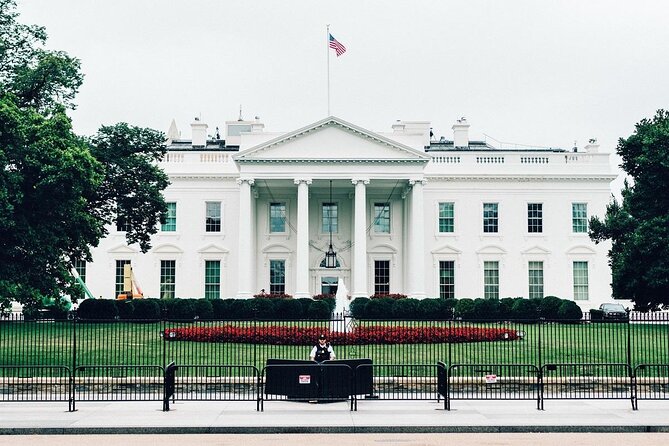The White House, Washington, D.C.: A Storied Residence at the Heart of American Democracy

Introduction:
The White House, an iconic symbol of American democracy, stands proudly at 1600 Pennsylvania Avenue NW in Washington, D.C. As the official residence and workplace of the President of the United States, this historic mansion has witnessed centuries of political, social, and cultural evolution. In this extensive exploration, we uncover the rich history, architectural splendor, and enduring significance of The White House, delving into its construction, notable residents, symbolic importance, and the role it plays as a living testament to the nation’s democratic ideals.
Historical Foundations:
- Construction and Architectural Evolution:
- The White House’s construction began in 1792, following a design competition won by James Hoban, an Irish architect. The neoclassical structure, inspired by European influences, has undergone several renovations and expansions over the years, resulting in the distinctive building we see today.
- Burning of Washington:
- The White House faced its first major test during the War of 1812 when British forces set fire to Washington, D.C. in 1814. Although the interior suffered significant damage, reconstruction efforts led by James Hoban restored the building to its former glory.
Presidential Residences:
- Presidents and Their Families:
- The White House has been home to every U.S. president since John Adams. Each First Family has left its unique mark on the residence, from personalizing living spaces to implementing design changes. The private quarters offer a glimpse into the lifestyle and personalities of the nation’s leaders.
- Renovations and Restorations:
- Throughout its history, The White House has undergone numerous renovations and restorations to accommodate the changing needs of the presidency and address structural concerns. Notable restoration efforts, such as Jacqueline Kennedy’s initiative in the 1960s, focused on preserving the historical integrity of the mansion.
Symbol of Democracy:
- Inaugurations and State Events:
- The White House serves as the backdrop for presidential inaugurations and state events, symbolizing the peaceful transfer of power and the democratic principles upon which the United States was founded. The South Portico has become an iconic setting for presidential ceremonies.
- Diplomatic Receptions and International Significance:
- The White House plays a crucial role in diplomatic affairs, hosting international leaders and dignitaries for state dinners and diplomatic receptions. These events contribute to the global image of the United States and underscore the importance of diplomacy in international relations.
Architectural Splendor:
- Neoclassical Design and Symbolism:
- The White House’s neoclassical design incorporates symbolic elements, such as the iconic columns and porticos, reflecting the ideals of ancient Greek and Roman architecture. The building’s symmetry and grandeur convey a sense of stability and order.
- Interiors and Furnishings:
- The interiors of The White House feature a blend of historical and contemporary furnishings, reflecting the changing tastes of its residents. Each room has a unique character, with important spaces like the Oval Office and State Dining Room representing the epicenter of executive decision-making and formal occasions.
The West Wing and Presidential Workspaces:
- Evolution of the West Wing:
- The West Wing, added in 1902, serves as the official workplace of the President. It houses the Oval Office, where presidents make crucial decisions and meet with advisors. The West Wing also accommodates key offices, including the Situation Room and the President’s private study.
- Presidential Decision-Making:
- The West Wing is the nerve center of the executive branch, where presidents conduct meetings, sign legislation, and address the nation. The layout reflects the evolving nature of the presidency and the need for efficient communication and decision-making.
Cultural and Educational Significance:
- Public Tours and Educational Programs:
- The White House opens its doors to the public through guided tours, offering visitors a chance to explore the historic rooms and learn about the presidency. Educational programs, such as the White House Historical Association, contribute to the preservation and dissemination of the building’s rich history.
- White House Historical Association:
- The White House Historical Association plays a vital role in preserving the history and heritage of The White House. Through publications, educational initiatives, and fundraising, the association ensures that the legacy of this iconic residence remains accessible to future generations.
Challenges and Security Considerations:
- Security Measures and Modernization:
- The White House faces ongoing challenges in maintaining security measures while balancing its role as a symbol of openness and accessibility. Modernization efforts, including technological upgrades and enhanced security protocols, aim to address these challenges without compromising the historical significance of the building.
- Preserving Historical Integrity:
- Striking a balance between preserving the historical integrity of The White House and adapting to contemporary needs remains an ongoing challenge. Restoration efforts and meticulous attention to detail are essential in ensuring that any modifications align with the building’s architectural and historical significance.
Conclusion: The White House – A Living Beacon of Democracy
The White House, with its neoclassical grandeur and storied history, stands as a living beacon of American democracy. From the earliest days of its construction to the modern era, this iconic residence has borne witness to the ebb and flow of political currents, the dreams and aspirations of presidents, and the cultural evolution of the United States. As a symbol of democracy, The White House transcends its role as a mere residence; it embodies the enduring principles upon which the nation was founded. Whether hosting world leaders, witnessing historic events, or serving as a residence for the First Family, The White House remains a testament to the resilience of democratic ideals and the enduring legacy of the United States’ highest office. In the heart of Washington, D.C., The White House stands not only as a physical structure but as a symbol of the nation’s past, present, and future—a testament to the enduring spirit of democracy.




